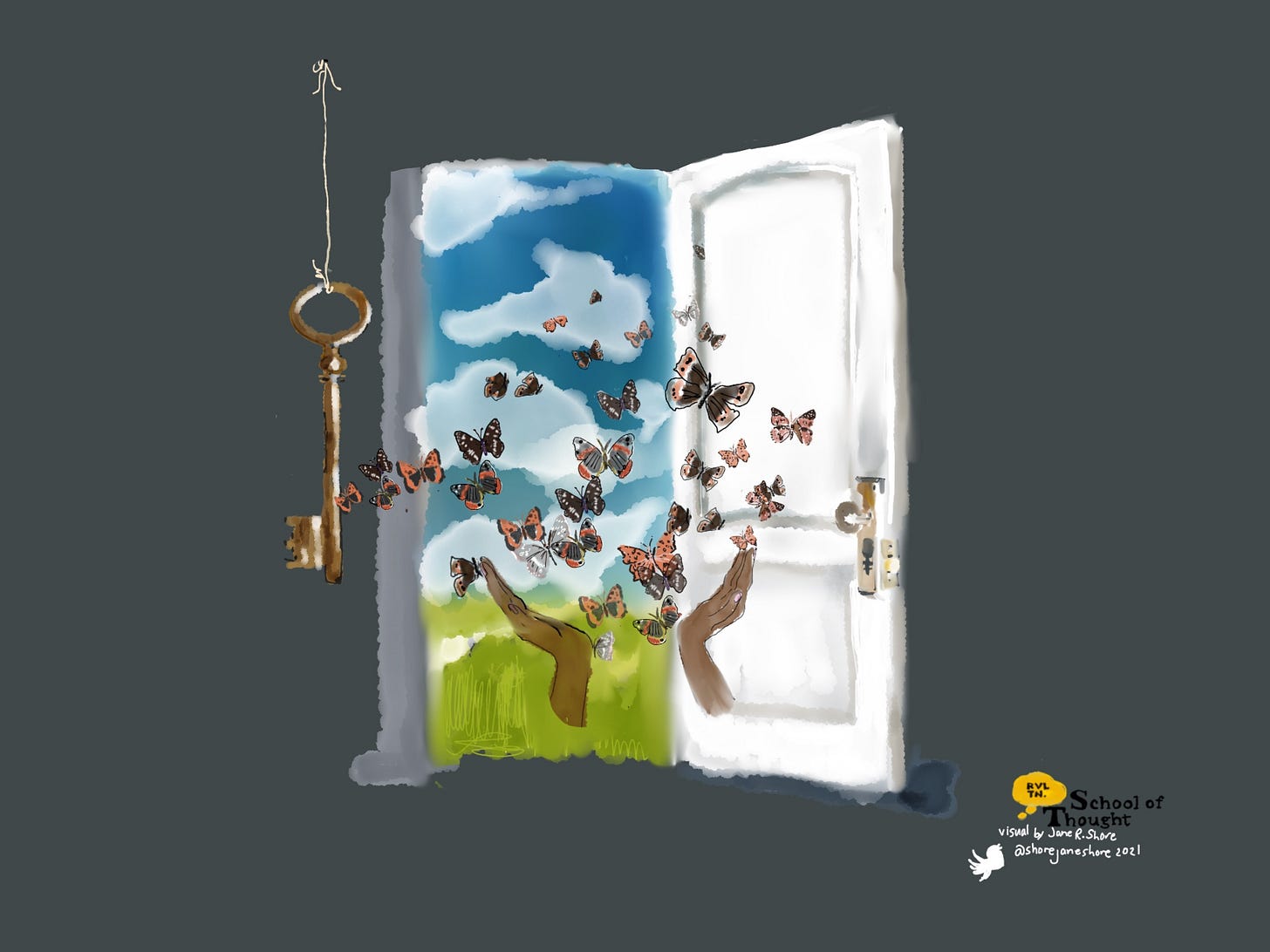It's Not Career Readiness, it’s Opportunity Readiness
Five Principles to guide readiness for opportunity building
"You can't use an old map to explore a new world." The Simpsons (& Albert Einstein)
Education is more than just career preparation.
And at this time in the world, ANY preparation can be a perplexing.
Instead of focusing on a job as a reward for completing an education, how might we steer students to aim for a future that aligns with their values, interests and skills?
Concentrating on a job can feel terminal, stressful and even…boring. Career, and personal development are long-term, constantly changing and full of possibility -- a marathon, not a sprint.
Education is a part of this development, not just a means to an end.
If you like what read, please click the heart above. ♥️ I’d love to hear from you.
The BIG Idea
It used to be that career preparation was solidly based on careers that were known. Now we need to prepare for the unknown. The needs of the job market are always evolving, and learning needs to keep pace.
Fewer than twenty years ago, if a young person expressed they wanted to be a digital artist, a driverless car mechanic, an app developer, a virtual assistant or a blogger, they would’ve been met with puzzled expressions. “What IS that? That’s not a job.”
A 2018 report by the Institute for the Future (IFTF) said that 85 percent of the jobs that today’s students will do in 2030 don’t exist yet.
How can we prepare students for a future we cannot predict?
What about offering an alternative to the traditional (read: already outdated) resume building activities? The idea is a program that builds OPTIONS, transformational experiences that build transferable skills. What are the foundational skills, habits and mindsets needed to be open opportunities not just jobs?
Making Big Ideas Usable
As we plan for our first summer of learning experiences for Revolution Students, the REVternships (more here), there have been several guiding principles that have oriented the program around OPPORTUNITIES.
Here are our guiding principles:
1. Build communities with and for young people
Social capital is one of the most valuable entry points to opportunity. Yet, large portions of America’s opportunity youth lack the relationships, connections, and resources required to open the sorts of doors they need opened. Programs that foster social capital are one promising avenue for enhancing the opportunity readiness.
2. Start with humans
Warm connections, not just social capital building door opening, are essential. Humans connecting with humans to learn about each other build advocacy, mentorship and champions. We need to prioritize strategies that ensure every young person has an engaged supervisor or mentor. Positive, supportive relationships with adults are as important as any other element of program design.
3. Pave the way for- and support—options
Let’s stop asking young people what they want to be when they get older. It is an easy way to get stuck in the path to being a ‘lawyer’ or a ‘computer programmer’ and then lose sight of the journey and the options. We need to open up pathways to learning about the infinite number of opportunities available.
4. Create and grow flexible and adaptive learning programs
Education is being reimagined. A more flexible curriculum is emerging to fit the needs of today and the future. We love examples such as Holberton in San Francisco, Wildflower School in Boston, and, of course, Revolution School in Philadelphia.
And finally,
5. Let their skills pay the bills
We need to invest in subsidized opportunities to balance future prospects. Creative subsidized jobs models could offer young people access to subsidies to start their own businesses, or to groups of organizations could start worker co-ops.
The future of work requires a focus on equity. And equity requires us to look at our communities, connect as humans, focus on who is able to “intern”, be intentional about minimum wage policy, and execute pathways for youth to enter the opportunity market. Durable connections to the people, places and organizations that offer opportunities are the goal.
Critical Connections
Grateful for continued connections. If you’re seeing this blog for the first time, you can read previous issues and
✓ SHARE what you learned. Not only does it help improve retention, but it also leads to ACTION.
Or just let us know you are out there by ENGAGING on Twitter. Pls tag us @Rvltnproject or @shorejaneshore and use any of the hashtags #makingbigideasusable #schoolofthought #communitybuilding #opportunityreadiness ❤️
Would you like to read more? Another Big Idea and how to Make It Usable is here.






